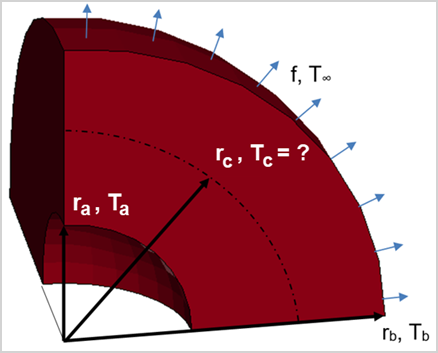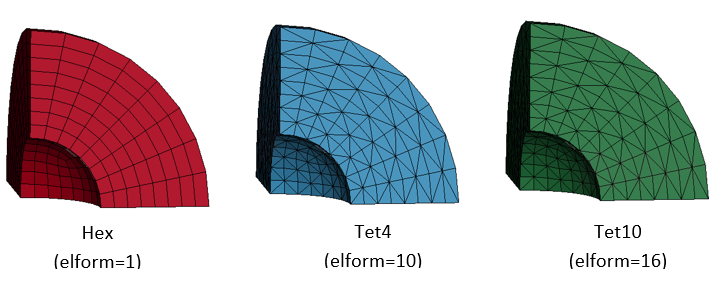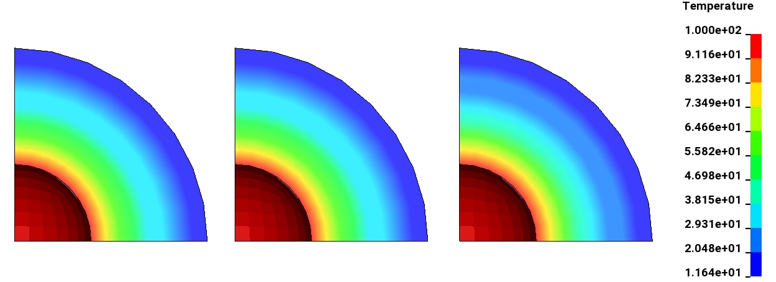VM-LS-DYNA-SOLVE-003
VM-LS-DYNA-SOLVE-003
Steady State Thermal Analysis of 3D Hollow Spheres with Radiation Boundary
Condition
Overview
| Reference: | Kreith, F. (1959). Principles of Heat Transfer (2nd ed.). International Textbook Co. |
| Analysis Type(s): | Steady State Thermal |
| Element Type(s): | Solid |
| Input Files: | Link to Input Files Download Page |
Test Case
A hollow sphere has an inner surface temperature Ta of 100°C at ra. The material of the hollow sphere is isotropic. A constant radiation boundary condition is applied on the outer surface rb with an ambient temperature T∞ = 11.60724°C and radiation heat transfer coefficient f = εσF = 1 W/(m2°C4). Compute the steady state temperature at rc = 3.51419 m.
| Material Properties | Geometric Properties | Loading |
|---|---|---|
| k = 1 W/(m°C) | ra = 2 m | Ta = 100°C |
| f = 1 W/(m2°C4) | rb = 5.02839 m | T∞ = 11.60724°C |
Analysis Assumptions and Modeling Notes
LS-DYNA Thermal Solver 11 is used. Three hollow spheres in this example are modeled using ELFORM = 1, 4, and 16. The temperature and radiation boundary conditions are applied using the keywords *BOUNDARY_TEMPERATURE and *BOUNDARY_RADIATION respectively.
The modelling of the sphere is accomplished using one eighth symmetry. The heat flow is limited to be only in the radial direction.

Using the Stefan-Boltzmann equation:
At steady state, the rate of heat dissipation Q:
Where A is defined:

And the thermal resistances Rac and Rbc can be expressed as:

From the above equations, the analytical solution of Tc is obtained as 36.7617°C.





